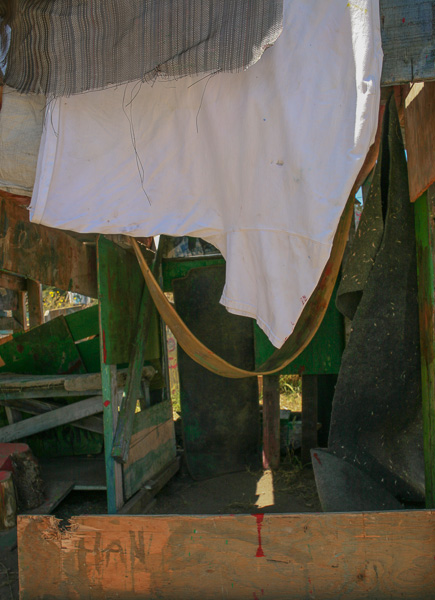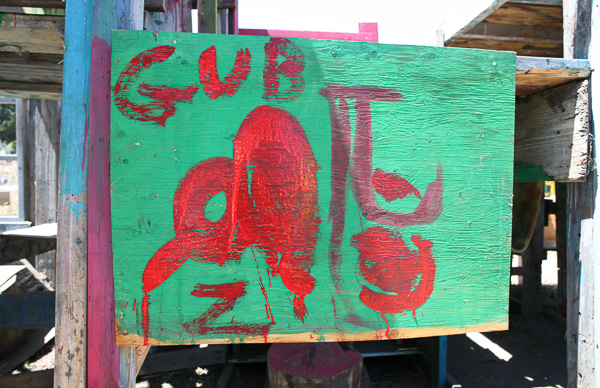Today I finished a new painting called “Study of Picasso’s Girl Before A Mirror.” Lots of work, so many details kept unfolding. Took six or seven sessions. For the last session, I put the original out of sight and focused on making my version smooth and balanced. Fun. Maybe now I’ll try doing a painting (not a copy) in the Master’s style.

“Study of Picasso’s Girl Before A Mirror,” oil on canvas, August, 2013, 20” x 24”. Click for a larger version of the painting.
I don’t want to sell the Picasso painting for awhile, want to enjoy having it around, but I’m discounting the prices of my other paintings for a summer/fall sale, check it out if you’re interested.
Now to the meat of today’s post. Biotweaking. Illustrated, as usual, with whatever photos I have kicking around.

In my forthcoming novel The Big Aha our society is using biotweaked plants and animals in place pretty much every type of manufactured good. They call these things nurbs, no particular reason for that, I just like the word (which also has an unrelated meaning in computer graphics, but never mind that.)
One of the difficult things with genetic engineering is going to be figuring out how to make the correct DNA change in order to accomplish some specified alteration to an organism’s body—let’s call this “retrofitting the DNA.”
Unless I’m mistaken, from a computer science standpoint, retrofitting DNA is what they call a computationally unsolvable problem, meaning that there’s no possible algorithm for automatically doing it. The cause of this unsolvability is that there’s no general shortcut for predicting the effects of a specific DNA change—short of putting in the change and regrowing the organism. And, if you’re trying to pick out a desired change from an ensemble of changes whose effects are unpredictable—well, then you’re looking at an unsolvable problem.

But I’m writing a science-fiction novel here, so I’m not going to let this problem stop me. I’ll get around it by invoking one of currently fashionable SF “bogosity generators,” to wit, quantum computation. In an idealized SFictional world, quantum computers can carry out vast parallel computations, and thereby finesse any trouble with formally unsolvable problems.
If I’ve solved the DNA retrofitting problem, then I can make an automatic process that converts high-level changes into DNA changes. It’s a little like a Lamarckian inheritance process—changes to nurb’s body go right down into its DNA and you can clone off nurbs with those same new properties. And quantum computation handles the thorny puzzle of figuring out what precise DNA changes will replicate some externally imposed change in a nurb’s body.
Once you retrofit a nurb’s DNA, you’d need to execute a biological refresh function, regenerating or regrowing all of the nurb’s body, as if by a web-page refresh on a computer screen. Science-fictionally, you can image the refresh happening quite rapidly, like a ripple passing across the organism’s body.

So what we need is:
(Retrofitting DNA Design) quantum computation trick for figuring out DNA changes to reflect desired high-level changes in an organism,
(Parallel DNA Tweaking) an ability to remotely tweak all trillion of a nurb’s cells at once,
(Bio Refresh) a built-in ability for nurbs to refresh themselves like a web page, re-biocomputing their forms from their altered DNA.
As I said, you can do the “Retrofitting DNA Design” with a quantum computer. And you can do the Parallel DNA Tweaking and the Bio Refresh with a so-called tweaker virus that might be, let us say, based on the harmaline molecule—recall Terence McKenna’s fantasy that his use of yage and psilocybin in concert had placed a tiny radio-receiver into each of his body’s cells. I miss Terence.
Anyway, once all this working, you design a web-based tweaker interface that, experientially, feels as if you are molding your nurb with virtual hands—the interface is turning your shape requests into DNA changes and applying the changes to the target organisms’ cells. And the Bio Refresh function, repeatedly invoked, gives you realtime feedback on what your DNA alterations are doing. So it’s like working with paint or with clay.

SF writing advice to self: Load on the miracles, but keep the explanations simple. All I really want is consistency, ease and flash. And be glad I’m not working as a scientist.








